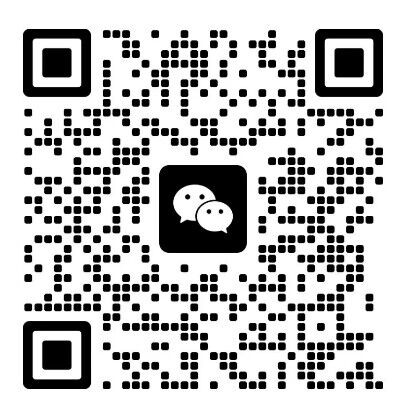(1930), Faulkner uses stream of consciousness to reproduce the perceptions of different people and to mix fact with legends and illusions (Faulkner, 1990). One of his goals is to present the world as a place where no objective truth exists — that is, a place in which each person has a dramatically different impression of the world (Li Weiping, 1996: 212).
Experiments with various aspects of the novel continued through the latter half of the 20th century. In 1962 Doris Lessing published The Golden Notebook. The form of the book is so new that most readers, even the critics, felt too shocked to make sense of it at first. But the significance of the novel form and Lessing’s contribution to the experimentation on the novels has been noticed over time. Then what is new in its form? The next section devotes to the description of the uniqueness in the form of The Golden Notebook.
Conclusion
The central question raised both in Cubism and The Golden Notebook is how to depict reality or truth (the word used by Anna), either by means of artistic devices or by literary forms and language. To find a form for suitable representation of reality is invariably the task for writers and artists in all generations.
Since Aristotle, many writers and critics maintain the theory of mimesis that literature and art should imitate reality as truly as they can. For example, Shakespeare holds “mirror theory” to define the nature and function of literature. Dryden claims that literature should be true to real life (Yin Qiping & Gao Fen,2001:4-6). In modern criticism, Tzvetan Todorov invents the term “verisimilitude” to establish the major characteristic in the tradition of mimesis theory. By verisimilitude he means that literary works should be in accordance with realities, which are identified and represented in realistic ways in their works (Culler, 1975: 208). The art theories development follows nearly the same route as literary theories do. As I have discussed in previous chapters, before Cubism, artists’ views and representation of external reality are largely realistic in terms of themes and techniques. Therefore, literary works and artistic works before the 20th century are essentially mimetic to the external world. To some extent, before the 20th century, the value of a literary work and art was determined by its ability to imitate the outside world. The more accurate, minute a description of the external details is, the more successful it is as an art to mirror the external reality. The fundamental reason for mimetic mode of representing the world is that people take the external reality as stable, objective, independent of human consciousness and observation. The reality is just “out there”. The task of novelists and artists is to imitate them as vividly and truly as they can.
However, in each generation, there are those writers and artists who set out to subvert the realist tradition, to show how it is inadequate for their own particular time, to find out other ways of conveying their perceptions of what constitutes reality. Since Henry James, some writers and critics question the validity and effectiveness of mechanical mimesis theory in literary representation of reality. Henry James first points out that the novel is nothing but “personal impressions on life” (James, 1979: 487). For him, the novel is largely the product of fleeting impressions and its extension by means of imagination which is highly subjective and flexible due to people’s various imaginative ability, personal insights and experience in life. In recent years, Raymond Williams also emphasizes the importance of individual subjectivity in interpreting and representing reality in their works. He believes that the traditional realism depends too much on merely copying and recording outside reality whereas the human subjective intervention in understanding and interpreting reality has been overlooked. He adds further that the so-called reality is not objective, and independent of human perception. It is forever changeable and interactive with human observation and cognition (Williams, 1992: 93).
The two world wars further shake people’s faith in their ability and rationality to control and understand the outer world. The stable, orderly, objective world seems to have been shattered into chaos and abyss, which is beyond people’s grasp and control. People’s attitudes and views toward external reality have changed dramatically. Against such historical background, Modernism becomes the main trend of intellectual thinking and literary and art practice, in which Cubism movement in art and modern literature can be seen as two of the main schools. Modernism highlights the essential nature of subjectivity and individuality in people’s interpretation and understanding of the outside world.
In modern period, fictions by James Joyce and Virginia Woolf make new exploration into human conscious and subconscious and question the human rationality in observing realities. Nevertheless, they still believe in the possibility of caging the truth by imitating the subconscious flow of thoughts. As Virginia Woolf says in her “Modern Fiction”, the task of novelists is to capture the fleeting and enormous subconscious. Anyway, she finds the way she believes to be true to represent reality. William Faulkner pushes the question of the possibility to represent realities within human capacity further in his masterpiece The Sound and the Fury (Faulkner, 1992). By employing plural narrators narrating the same event again and again, each time emerging a new narration to cancel the previous narration, he makes it clear that there is no thorough way to represent reality fully in whole. The reality discovered by one narrator from his point of view is only one reality among many (Vargish & Mook, 1999: 157). But what Faulkner does to his fiction is still limited to the language and narrative devices. He does not make radical changes in novel form. It is Lessing who goes further in the experimentation on the novel form and the narrative techniques.
In the realm of art, Picasso, the leading figure in Cubism Movement, pioneers into the reflection upon the problem of the artistic interpretation and representation of external reality. Picasso said of the “reality” in Cubism that “it’s not a reality you take in your hand. It is more like perfume … in front of you, behind you, to the sides. The scent is everywhere but you don’t quite know where it comes from” (Vargish & Mook, 1999: 89). What he said expresses his view that external reality is not absolutely objective as people expect and it is inaccessible most of time. It exists in people’s observation and interpretation. To put it simply, external reality is the reality of the individual. To show his worldview, he rejects painting the solid objects, a mimetic way of artistic representing of reality. He makes radical distortions and violations against the physical law in his artistic composition. As I have discussed in previous chapters, the major characteristics of Cubism can be summarized as following: simultaneity in the union of time and space, multiplicity in representing reality and high reflexivity in composing process. By uniting the dimension of space and time, Cubism tries to capture the dynamic reality that is located in space but changing with time. He also tries to combine what he has observed from multiple perspectives into one single composition in order to show multiple facets of reality. Painting before Cubism is largely mimetic. Painters imitate what they have seen but seldom reflect upon what they are doing. From their paintings, we see objects they paint but no trace of painter himself can be located. But in cubist paintings, the viewer can strongly feel the presence and self-awareness of the painter himself. The reality in cubist paintings is not the reality the painter sees from one stable perspective but what he thinks of it. So the artistic act in Cubism is highly reflexive.
Cubism has great impact on modern literary works. When we examine some literary works at that time or soon after Cubism Movement, we may find some trace of similarities between literary narratives and Cubism. However, no writer has constructed the form of their work based on the Cubism shaping principles as self-consciously as Doris Lessing has. She is not content with what the previous masters have done. Her struggle to find the right words and right form to designate a truth of a process, an event, is often a way of discovering more deeply the perceptions of reality. When she becomes dissatisfied with realism she is becoming aware of the “so-called” real world as superficial, and is aware that her insights into reality could not be accommodated within the conventions of mimetic writings. For this reason, she needs a new form to accommodate her multi-layered version of reality.
As Pablo Picasso defies people’s habitual view toward external reality by his great shocking paintings, Doris Lessing also makes some daring innovations on the novel form to challenge conventions in novel writing. In fact, what she has done in her fiction parallels the theory and practice of Cubism. In The Golden Notebook, she virtually constructs her novel by the shaping principles in Cubism. The shaping principles, as mentioned above, include the union of time and space, the multiplicity in representing reality and the reflexive nature in the shift from the mere reality imitation to the observation of external reality.
In The Golden Notebook, Lessing takes the novel form apart to see how far a fiction is capable of truth telling. By fra
TEL:蒋老师17773102705
扫一扫下方二维码关注湖南自考生网微信公众号、客服咨询号,即时获取湖南自考、成考、网教最新考试资讯。

关注公众号免费拿资料

微信扫一扫咨询

微信扫一扫咨询

1、鉴于各方面资讯时常调整与变化,本网所提供的信息仅供参考,实际以考试院通知文件为准。
2、本网部分内容来源于网络,如有内容、版权等问题请与本网联系,我们将会及时处理。联系方式 :QQ(393848300)
3、如转载湖南自考生网声明为“原创”的内容,请注明出处及网址链接,违者必究!